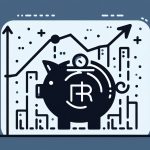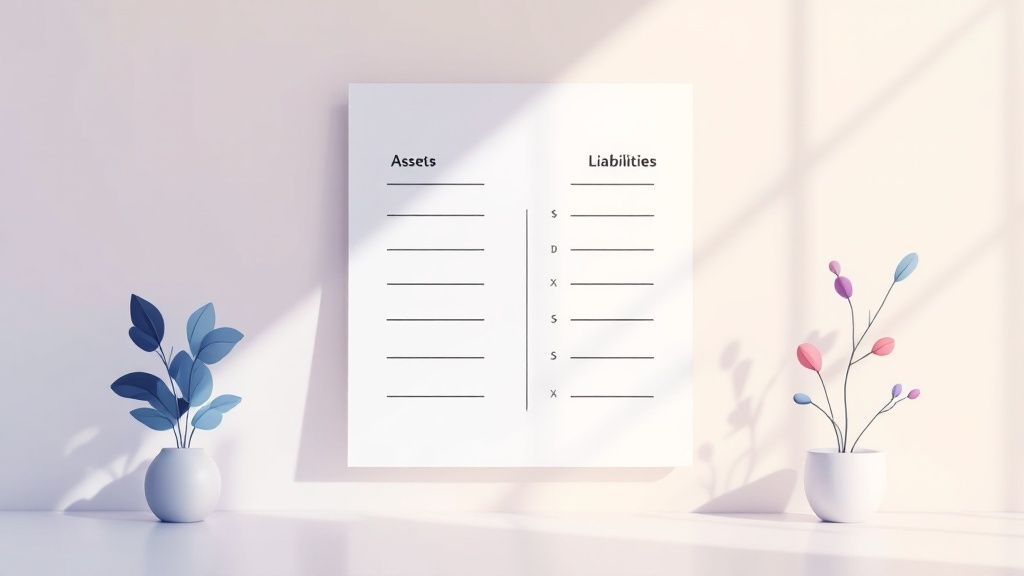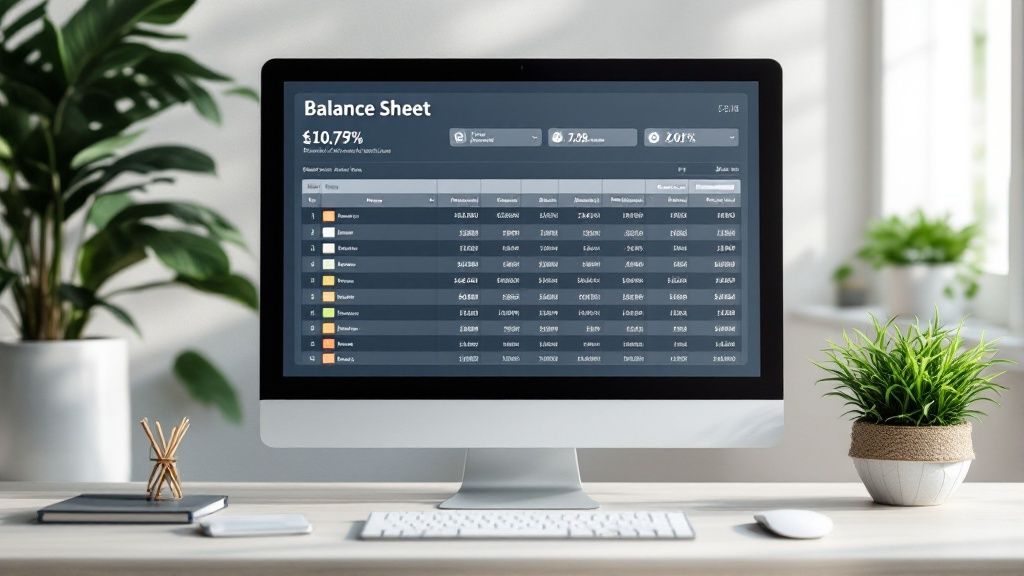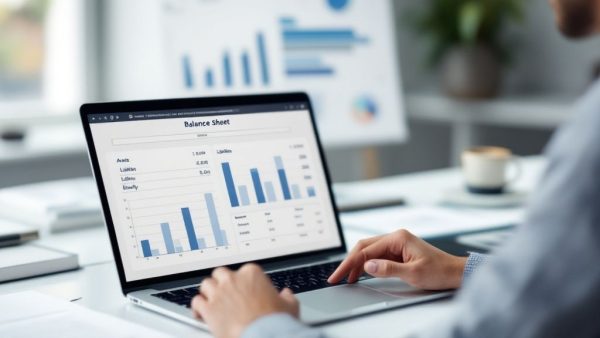
Navigating the 6 Business Life Cycle Stages
August 15, 2025
Where Do Retained Earnings Go? A Practical Guide for NZ Business Owners
August 21, 2025How to Read a Balance Sheet

Financial statements can feel overwhelming. But understanding them, especially the balance sheet, is essential for grasping a company’s financial health. Whether you’re an investor, a business owner, or just looking to improve your financial knowledge, this financial snapshot is key. This section will simplify how to read a balance sheet, giving you the confidence to analyze finances.
The Fundamental Equation: Assets = Liabilities + Equity
The balance sheet centers around a fundamental equation: Assets = Liabilities + Equity. This equation represents a company’s financial position at a specific moment in time. Think of a bakery. Its assets might be ovens, ingredients, and cash on hand. Its liabilities could include loans and outstanding payments to suppliers. Equity represents the owner’s share of the business. Simply put, everything a company owns (assets) is financed either through borrowing (liabilities) or the owner’s investments (equity).
The Three Pillars: Assets, Liabilities, and Equity
Reading a balance sheet means understanding its three core components: assets, liabilities, and equity. These elements provide a complete picture of a company’s financial standing.
Understanding other financial statements is also important. For example, learning about a Profit and Loss and how it contributes to business growth is beneficial. By analyzing these interconnected statements, you develop a deeper understanding of a company’s overall financial performance. This knowledge helps you make informed decisions, whether you’re investing, lending, or running your own business.
Learn more: How to Read Profit and Loss Statements: Quick Guide
Decoding the Asset Section: What Companies Actually Own

The asset section of a balance sheet provides a snapshot of everything a company owns and uses to generate value. Think of it as a peek into the company’s toolbox. Understanding this section is fundamental for anyone wanting to grasp the basics of financial statements. This section aims to demystify the accounting jargon and explain what different assets mean for a business.
Current Assets: The Short-Term Resources
Current assets are resources a company expects to convert into cash or use up within one year. These are the readily available resources a company has on hand.
- Cash and Cash Equivalents: This represents the most liquid asset—actual cash in the bank and assets that can be quickly converted to cash, such as short-term investments. Examples include money in a cheque/saving account.
- Accounts Receivable: This refers to the money owed to the company by its customers for goods or services already delivered. Essentially, it represents sales made but not yet paid for.
- Inventory/Stock: This includes goods held for sale in the ordinary course of business. For a retailer, this means the merchandise on their shelves. For a manufacturer, it encompasses raw materials, work-in-progress, and finished goods.
Non-Current Assets: The Long-Term Investments
Non-current assets, also known as long-term assets, provide value over a longer period, typically more than one year. These assets are crucial for a company’s long-term operations and future growth.
- Property, Plant, and Equipment (PP&E): This category includes tangible, long-term assets such as buildings, machinery and land
- Intangible Assets: These are assets without physical form, such as patents, trademarks, and copyrights.
- Long-Term Investments: These are investments the company intends to hold for more than one year.
To better understand the different types of assets commonly found on a balance sheet, let’s look at the following table:
This table breaks down different asset categories, provides examples, and explains what these assets can tell you about a company.
Common Types of Assets on a Balance Sheet
| Asset Type | Examples | What It Tells You |
|---|---|---|
| Cash and Cash Equivalents | Cash in bank, short-term investments | How much readily available cash a company has |
| Accounts Receivable | Money owed by customers | How much revenue is tied up in credit sales |
| Inventory | Goods held for sale (raw materials, finished goods) | How much a company has invested in its product stock |
| Property, Plant, and Equipment (PP&E) | Buildings, machinery, land | How much a company has invested in its physical infrastructure |
| Intangible Assets | Patents, trademarks, copyrights | How much value a company holds in non-physical assets |
| Long-Term Investments | Stocks, bonds, real estate | How much a company has invested in long-term growth opportunities |
This table provides a quick overview of the different types of assets and their significance. By understanding these categories, you can gain a better understanding of a company’s financial position.
What Assets Tell Us: Insights Into Financial Health
The composition of a company’s assets reveals a lot about its business model and strategy. A company heavily invested in PP&E, such as a manufacturing firm, will likely have different growth prospects and financial risks than a tech company with a large portfolio of intangible assets. Recognizing these differences is essential for interpreting a balance sheet.
For instance, a high proportion of current assets suggests a company is more liquid, meaning it can quickly meet short-term obligations. However, too much cash on hand might signal missed investment opportunities. Conversely, significant investment in long-term assets, while essential for future operations, may reduce a company’s agility in responding to market changes. By analyzing the mix and proportions of assets, you can gain valuable insights into a company’s financial health and strategic direction, laying the groundwork for understanding the liabilities section, which shows how a company finances these assets.
Understanding Liabilities: The Real Story of Company Debt

After exploring a company’s assets, the next step in understanding a balance sheet is getting a grip on its liabilities. Liabilities represent what a company owes to others – its obligations. This section explains the different types of debt and what they tell us about a company’s financial standing.
Current Liabilities: Short-Term Obligations
Current liabilities are debts due within one year. These are typically short-term obligations that need attention in the near future.
- Accounts Payable: This is the money owed to suppliers for goods or services already received but not yet paid for. It’s like an IOU to vendors.
- Short-Term Debt: This includes loans or portions of loans due within the next year. A business might use a line of credit, for example, to manage day-to-day expenses.
- Accrued Expenses: These are expenses a company has incurred but hasn’t yet paid. This could include salaries owed to employees or interest due on a loan.
Non-Current Liabilities: Long-Term Commitments
Non-current liabilities, also called long-term liabilities, are debts not due within the next year. These represent larger, long-term financial commitments.
- Long-Term Debt: This category includes loans or bonds that mature in more than one year. A mortgage on a building or a bond issued to raise capital are examples of long-term debt.
- Deferred Revenue: This is money received for goods or services not yet delivered or performed. Think of a magazine subscription paid in advance.
- Other Long-Term Liabilities: This category covers a variety of other long-term obligations, such as pension obligations or lease liabilities.
Debt Evaluation Tools: The Debt-to-Equity Ratio
Understanding the types of liabilities is important, but how do we assess their overall impact? One key tool is the debt-to-equity ratio. This ratio compares a company’s total debt to its shareholder equity. It reveals how much a company relies on borrowed funds versus its own resources.
A high ratio might indicate over-reliance on debt, potentially making the company vulnerable. For example, a debt-to-equity ratio of 2.0 means a company has twice as much debt as equity. This ratio is also valuable for understanding macroeconomic trends.
Balance sheets give important insights into the financial health of economies. Organizations like the OECD compile these financial accounts and balance sheets to create macro-financial indicators. These are used to analyze sector performance and conduct comparisons across countries. You can find more detailed information here: OECD Financial Accounts and Balance Sheets.
Liabilities and Business Strategy: Leverage vs. Risk
A company’s liabilities offer a glimpse into its financial strategy. Using debt strategically can fuel growth and expansion. This is called leverage. However, too much debt creates financial risk.
For example, a company with volatile revenues and a high level of long-term debt might be vulnerable to economic downturns. Consistent debt repayments are challenging when income is unpredictable.
Cracking the Code of Shareholders’ Equity

The shareholders’ equity section of a balance sheet often gets overlooked. However, it offers critical insights into a company’s true value and financial well-being. This section breaks down important terms like retained earnings and treasury stock, explaining what they mean for evaluating businesses. This helps us determine if management is effectively building shareholder value.
Understanding Equity: Ownership and Value
Shareholders’ equity represents the owners’ stake in the company. Think of it as what remains after all liabilities are subtracted from a company’s assets. This section tells the story of how a company has financed itself through investments and reinvested profits. For example, imagine a company liquidates all its assets and pays off all its debts. The remaining amount would go to the shareholders.
Key Components of Shareholders’ Equity
Understanding the building blocks of shareholders’ equity is essential for anyone learning about balance sheets. These elements provide specific details about the company’s ownership structure and financial history.
- Ordinary Shares: This represents the shareholders’ initial investment when buying company shares. It’s the fundamental ownership stake in the business.
- Preference Shares: This typically carries different dividend and voting rights compared to ordinary shares.
- Retained Earnings: This vital element represents the accumulated profits reinvested in the business, instead of being paid out as dividends. Retained earnings are a key indicator of a company’s profit management over time. Consistently growing retained earnings suggest the company is profitable and reinvesting for future growth.
How Equity Connects to Company Performance
A company’s performance over time is directly reflected in its shareholders’ equity. Increasing equity usually suggests profitability and growth. Declining equity, however, can signal losses or excessive dividend payouts, potentially impacting long-term prospects.
Equity’s Importance to Investors and Creditors
Shareholders’ equity matters to various parties. Investors use equity information to assess financial health and growth potential. Creditors, on the other hand, look at equity to evaluate a company’s ability to repay debts. A healthy equity position provides a safety net for creditors, building confidence in the company’s financial stability. This ability to attract investors and secure financing is vital for sustained growth. By thoroughly analyzing the shareholders’ equity section, you gain a much deeper understanding of a company’s overall financial performance and future outlook. This provides a more comprehensive view of a company’s health than most casual investors achieve.
Financial Detective Work: Balance Sheet Ratios That Matter
We’ve looked at the building blocks of a balance sheet—assets, liabilities, and equity. Now, let’s explore how these elements combine to provide a complete financial overview. This section simplifies financial ratios, turning them into practical tools for assessing a company’s financial well-being. You’ll learn which ratios offer valuable insights and which are less critical when learning how to read a balance sheet.
Key Ratios for Analyzing a Balance Sheet
Several key ratios, derived from the balance sheet, offer valuable insights into a company’s financial health. These ratios help us understand the raw data presented on the balance sheet.
- Current Ratio: This ratio measures a company’s ability to cover short-term debts with its current assets. It’s calculated by dividing current assets by current liabilities. For example, a current ratio of 1.5 means a company has $1.50 in current assets for every $1.00 of current liabilities.
- Quick Ratio (Acid-Test Ratio): Similar to the current ratio, the quick ratio looks at the most liquid assets, excluding inventory. It’s calculated by dividing current assets (minus inventory) by current liabilities. This offers a more conservative view of short-term liquidity.
- Debt-to-Equity Ratio: This ratio shows how much a company relies on borrowed funds versus its own equity. It’s calculated by dividing total debt by total equity. A higher debt-to-equity ratio can signal higher financial risk.
- Debt-to-Asset Ratio: This metric compares a company’s total debt to its total assets. It shows the percentage of assets financed by debt. A lower ratio usually suggests a healthier financial position.
These ratios offer a quick overview of a company’s financial health, helpful for quick assessments and comparisons.
Interpreting Ratios: Context is King
A “good” ratio can vary significantly between industries. For instance, a high debt-to-equity ratio might be acceptable for a capital-intensive industry like manufacturing, but not for a tech startup. A retail business with high inventory turnover might be doing well, while the same turnover for a luxury retailer might indicate slow sales.
Essential Balance Sheet Ratios Comparison
To help you understand, here’s a table summarizing some essential balance sheet ratios. It explains what they measure, how they’re calculated, and provides a general idea of ideal ranges.
| Ratio Name | Formula | What It Measures | Ideal Range |
|---|---|---|---|
| Current Ratio | Current Assets / Current Liabilities | Short-term liquidity | 1.5 – 2.0 or higher (varies by industry) |
| Quick Ratio | (Current Assets – Inventory) / Current Liabilities | Immediate liquidity | 1.0 or higher |
| Debt-to-Equity Ratio | Total Debt / Total Equity | Financial leverage | Varies widely by industry, generally below 2.0 considered desirable |
| Debt-to-Asset Ratio | Total Debt / Total Assets | Proportion of assets financed by debt | Generally lower is better, indicating less reliance on debt |
This table outlines key ratios, their formulas, and what they assess. Keep in mind that these ideal ranges are guidelines, and industry benchmarks offer more specific context.
From Ratios to Insights: Making Informed Decisions
By understanding these balance sheet ratios, you can evaluate a company’s liquidity (ability to meet short-term obligations), solvency (ability to meet long-term obligations), and operational efficiency. These insights are useful for investors, lenders, and business owners assessing financial health. This knowledge allows for better decisions and forms the basis for understanding how different industries influence balance sheet interpretation.
Industry Secrets: Reading Balance Sheets Like a Pro
Understanding balance sheets is a valuable skill. However, true expertise comes from understanding how different industries impact how you should interpret them. Industries have unique business models, leading to big differences in how balance sheets are structured. This means a healthy balance sheet for one company could be a warning sign for another, even if they’re similar in size.
Manufacturing Vs. Software: A Tale of Two Balance Sheets
For example, manufacturers often have significant investments in Property, Plant, and Equipment (PP&E). These physical assets, like factories and machines, are essential for production. However, they also tie up a lot of capital. A software company, on the other hand, might have minimal PP&E. Instead, they might have substantial intangible assets like software licenses and intellectual property. Comparing these two companies based only on PP&E would be misleading.
The Banking Anomaly: Liabilities as Assets
Banks have balance sheets that seem counterintuitive. They consider loans to be assets, not liabilities. This is because loans represent a borrower’s promise to repay, generating future income through interest. A bank’s liabilities include customer deposits, which they then use to fund these loans. This highlights how industry-specific knowledge is essential for understanding balance sheets. Deriving insights from financial statements is key.
Retail Inventory: A Story of Efficiency
In retail, inventory management is critical. A high inventory turnover ratio signals efficient operations. A low ratio could mean slow sales or too much stock. This ratio is calculated by dividing the cost of goods sold by the average inventory. This analysis needs to account for seasonal changes and product types. A grocery store will naturally have a higher inventory turnover than a furniture store.
Balance Sheet Red Flags: Spotting Trouble Before Others
A balance sheet offers a snapshot of a company’s financial health. However, it can sometimes obscure important details. This section will help you learn to spot these hidden warning signs, giving you a leg up when making investment decisions. You’ll be able to identify potential problems that even seasoned investors might overlook.
Declining Liquidity: When the Well Runs Dry
One of the clearest red flags is declining liquidity. This means a company struggles to meet its immediate financial obligations. A shrinking current ratio (current assets divided by current liabilities) can signal this problem. For example, a current ratio dropping from 2.0 to 1.0 in a year suggests trouble covering short-term debts. Also, keep an eye on cash and cash equivalents, particularly if accounts payable are rising. This could mean the company is delaying payments.
Excessive Debt: A Heavy Burden
High debt levels, especially compared to equity, are another warning sign. A climbing debt-to-equity ratio might mean the company relies too much on borrowing to operate. This makes it vulnerable to rising interest rates and economic downturns. A debt-to-equity ratio consistently above 2.0, especially in a volatile industry, should raise concerns. Also, examine the company’s mix of short-term and long-term debt. Too much short-term debt can create difficulties when it comes time to refinance.
Inventory Issues: The Tale of Unsold Goods
For businesses with a lot of inventory, pay close attention to the inventory turnover ratio. A decreasing turnover can signal slow sales or obsolete products. While a healthy turnover rate varies by industry, a sustained decrease compared to competitors could indicate weakening demand. For instance, a clothing retailer with slower inventory turnover than its rivals might be facing declining popularity or inefficient inventory management.
Unexplained Equity Shifts: Unmasking Hidden Issues
Sudden or unexplained changes in shareholders’ equity deserve careful examination. While growing retained earnings are generally positive, a rapid increase without corresponding profit growth might suggest accounting tricks. Conversely, a sharp decrease in retained earnings could signal significant losses or excessive dividend payouts, potentially impacting future investments.
Hidden in the Footnotes: The Fine Print Matters
Balance sheet footnotes contain critical information that can reveal hidden risks. They detail accounting policies, contingent liabilities, and off-balance sheet financing. Pay attention to disclosures about pending lawsuits, significant debt guarantees, or lease obligations, as these can have a significant impact on a company’s financial standing. Footnotes might reveal, for instance, a significant reliance on operating leases, which aren’t recorded on the balance sheet but still represent significant financial commitments.
Building Your Checklist: Key Takeaways
To identify potential problems early, use a balance sheet checklist that includes these key factors:
- Declining Liquidity: Shrinking current and quick ratios, and declining cash balances.
- Excessive Debt: Rising debt-to-equity and debt-to-asset ratios.
- Inventory Issues: Declining inventory turnover and growing inventory relative to sales.
- Unexplained Changes in Equity: Significant fluctuations in retained earnings and other equity accounts.
- Footnote Scrutiny: Careful review of all footnotes for hidden risks and off-balance sheet obligations.
By understanding these red flags and regularly analyzing balance sheets, you can develop a sharp eye for potential problems and make more informed investment decisions.
Want to improve your business finances and better understand your own balance sheet? Contact Business Like NZ Ltd. We provide tailored advice and solutions to help small businesses in Auckland thrive. Visit us at https://businesslike.co.nz to learn more.




